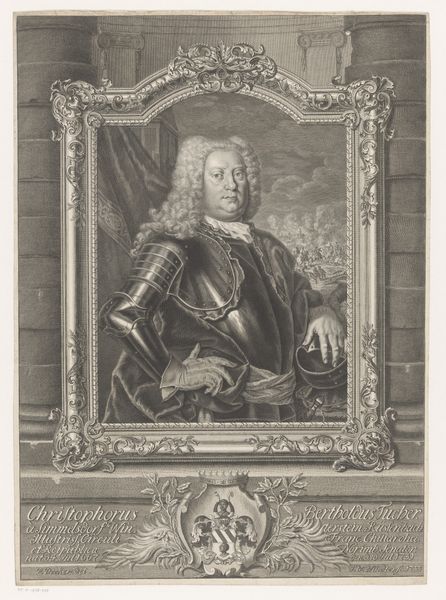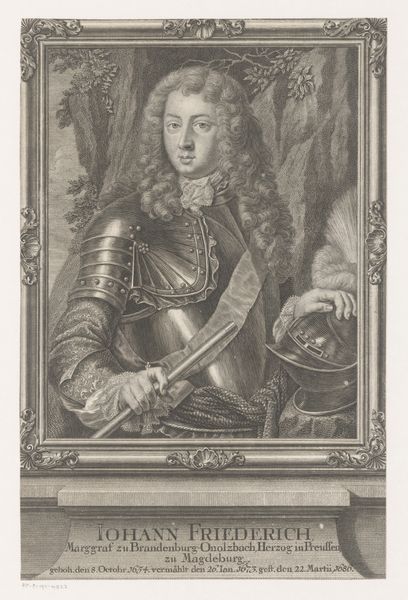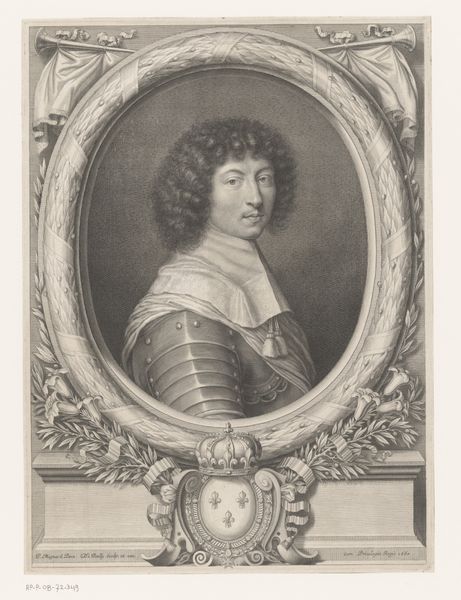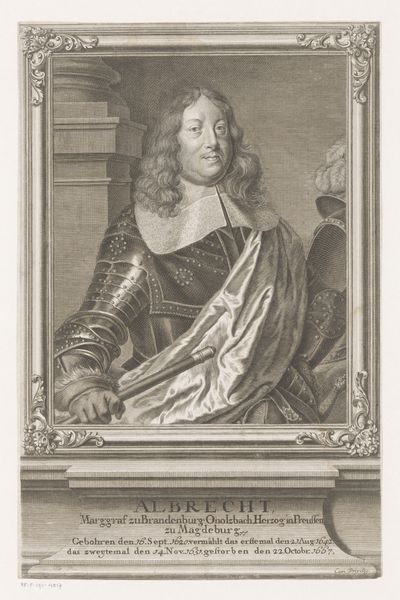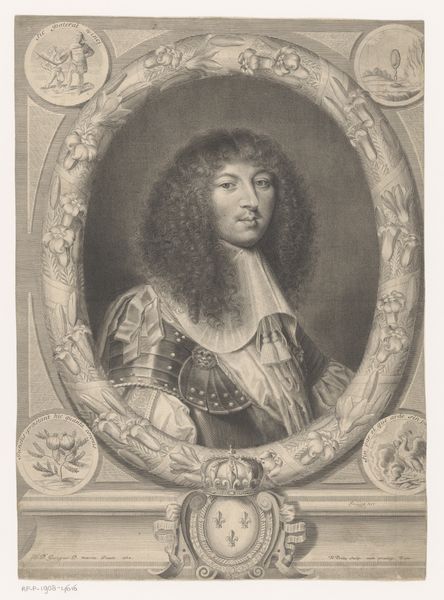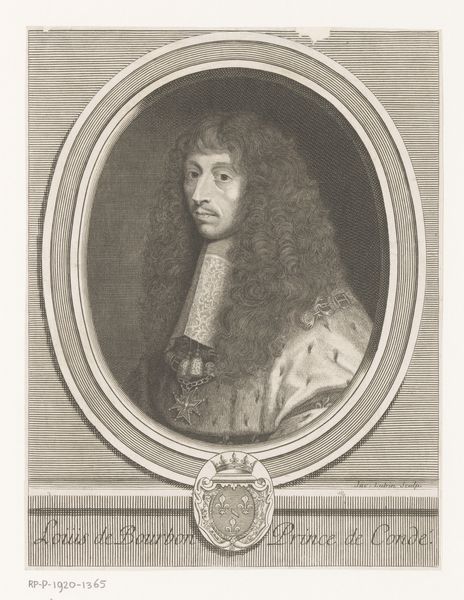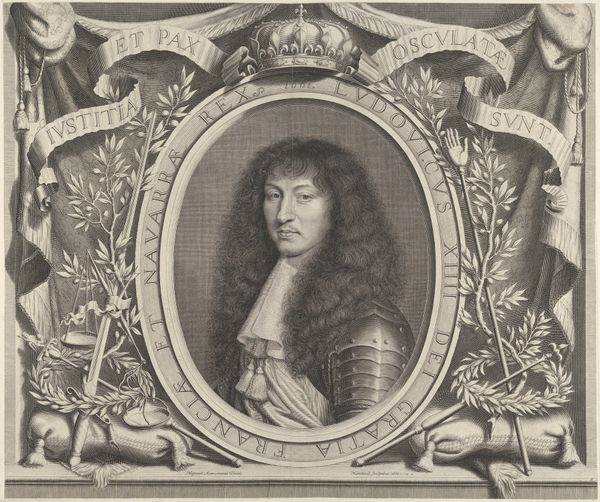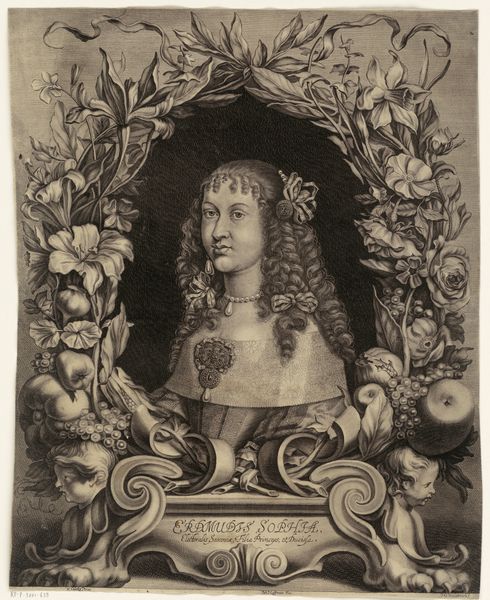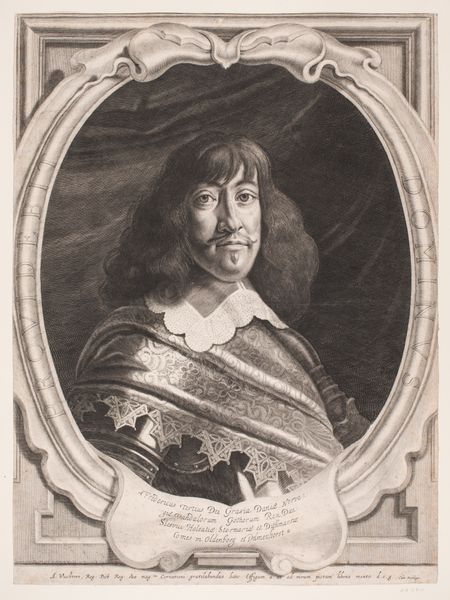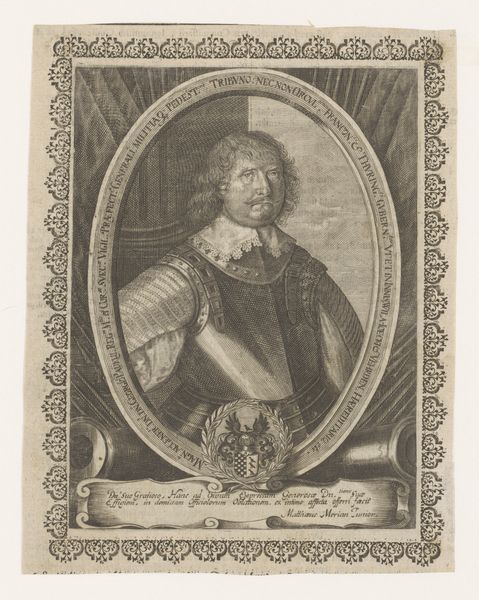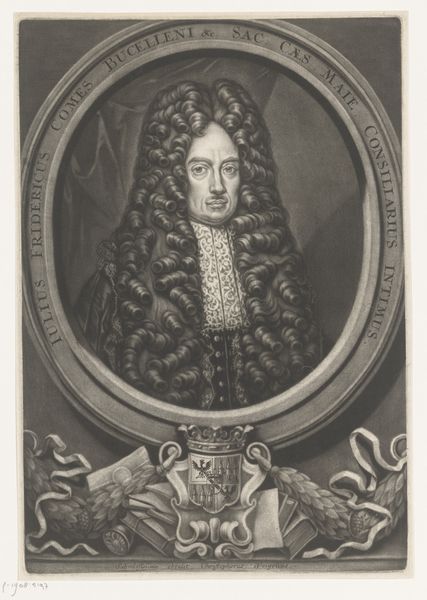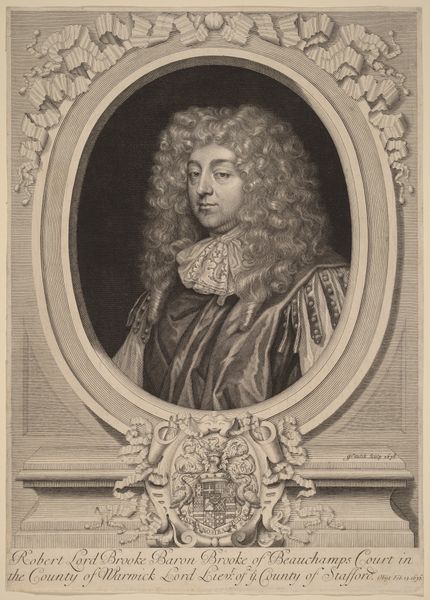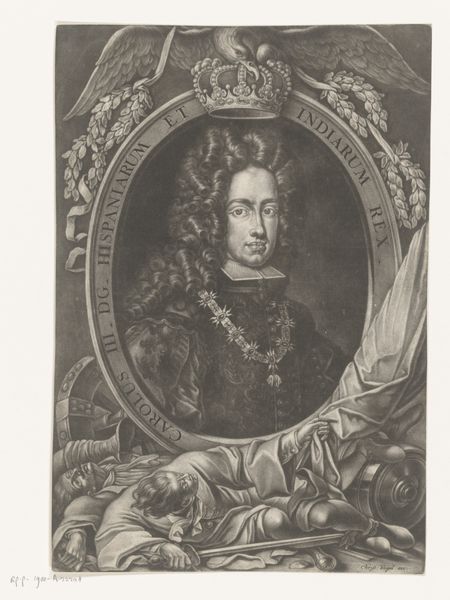
painting, oil-paint, wood
#
portrait
#
baroque
#
painting
#
oil-paint
#
historical fashion
#
character sketch
#
wood
#
genre-painting
Dimensions: 43.6 cm (height) x 34.2 cm (width) x 5.7 cm (depth) (Brutto), 31.5 cm (height) x 22 cm (width) (Netto)
Curator: This is Frans van Mieris the Elder's "Portrait of Count Ulrik Frederik Gyldenløve," painted in 1662. Note the wood support and the use of oil paints. Editor: Okay, first impression? Serious mood lighting. Like, this guy is definitely brooding about something while staring out a rainy window... only there's no window, just him and his…slightly intimidating frilly collar. Curator: Ulrik Frederik Gyldenløve was the illegitimate son of King Frederick III of Denmark, so the gravity makes a lot of sense. These portraits were very important to his public image, literally constructing status. He served as Governor-General of Norway. Editor: Ah, legitimacy and power – never a simple recipe! Look at that self-assured yet somewhat hesitant gesture with the glove in his hand; a touch of vulnerability, maybe? What a psychological glimpse, right? It is interesting that he seems framed – almost caught looking off elsewhere. Curator: Right, it’s staged! The portrait is carefully built, complete with symbolic trappings of military authority and familial heraldry below. Note, too, how portraiture evolved alongside growing national identities and systems of nobility in the Baroque period. A bit of stagecraft was critical. Editor: Absolutely. Think about the performance involved! He's got the look-at-me-but-don't-get-too-close vibe perfected. Van Mieris has given this man just the right amount of aloof intensity. I admire, too, the way the artist plays with textures - the stark contrast of the refined lace to his dark attire. Curator: The texture, the composition… they highlight not just Ulrik Frederik’s status, but van Mieris’s skill as a painter. The control in rendering light and shadow really helped artists like van Mieris capture likeness and therefore influence the perceived character of their sitter. These details weren’t accidental; their manipulation served very real social and political functions. Editor: So true! Well, looking at him now, I’m seeing beyond the pose. I'm feeling, maybe, some compassion for this dude. A life in the shadow of the throne cannot have been simple, whatever riches were acquired! Curator: Agreed. Beyond courtly portraits as tools for displays of power, considering the person presented becomes important. This piece reflects the nuances inherent when both collide.
Comments
No comments
Be the first to comment and join the conversation on the ultimate creative platform.
